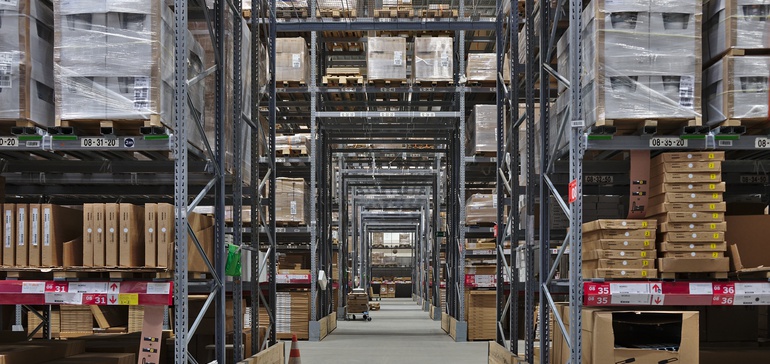
Dive Brief:
- E-commerce-only facilities made up more than 27% of the industrial real estate market share — more than any other industry — in the 22 largest markets in the U.S. during 2020, according to a new report emailed from CBRE. Providers of third-party logistics had the next-largest share at nearly 26%, then came general retail and wholesale at almost 25%.
- The vacancy in these top markets for buildings 200,000 square feet or larger was 4.6% in 2020, down from 5.2% in 2019, according to the report.
- There are more than 189.6 million square feet of square feet under construction, the report said, but nearly 44% is preleased.
Dive Insight:
The storage business is booming. Many supply chains seem to need more space, whether it’s for distribution, fulfillment or sortation. And while there are still millions of square feet under construction that have not been preleased, it might not be enough if demand continues as it did in 2020, James Breeze, CBRE’s senior director of research and the head of industrial and logistics, global, said during a press conference Monday.
“In 2020, there was 350 million square feet of transactions,” Breeze said. “Based on current tenants in the market, we expect — if there is available space — for 2021 to be similar, in terms of demand. So really, we’re not in a state of oversupply; we’re in a state of undersupply. We need a lot more space under construction.”
Breeze pointed to cities such as Phoenix and Columbus, Ohio, as emerging locations with strong industrial real estate demand. Much of the growth correlates with population increases in these areas, as companies look to get their inventory close to consumers. But companies are also looking to build close to logistics infrastructure, he said.
“A lot of occupiers are looking at markets that have a major air hub, or a major rail, or an inland port,” he said. “And that’s why we’re seeing a really big increase in demand in a market like Columbus that has an inland port, and in a market like Memphis, [Tennessee,] that has a major air hub.”
Industrial real estate has been a tight market for a number of years now, with low vacancy rates and rising rents, but this “accelerated significantly in 2020,” Breeze said.
Quickly rising rents and the lack of availability have been big challenges for companies in this market, according to Mindy Lissner, an executive vice president at CBRE who also spoke at the Monday event.
“A lot of companies are really facing some sticker shock,” Lissner said. “They signed a lease five or 10 years ago and really haven’t thought about where the rents are going. And I just received a proposal for a tenant whose rent has doubled since their lease signing five years ago.”
This has resulted in some companies being more flexible when it comes to warehouse location, as they look for options with more reasonable rent, she said.
E-commerce-only locations might have less flexibility when it comes to location, because they need to be close to viable labor pools.
“E-commerce fulfillment facilities are typically relying on people to fill those orders,” Lissner said. “So, one of the things that’s important to them is labor and having availability for a lot of labor and well-priced labor.”
E-commerce will also need parking for all those workers, while a 3PL location might prioritize more trailer parking, she said.
Breeze said that 3PLs could take over as having the largest market share of industrial real estate this year, as more companies look to outsource e-commerce functions to these companies.
A recent report from Prologis noted that e-commerce facilities typically require three times more warehousing space than traditional retail, because there tends to be more product variety, and parcel shipping needs more space than pallet shipping.
“They’re going to start leasing larger facilities because they’re being hired by companies at a greater clip to handle e-commerce distribution and hold and distribute those increased inventories,” Breeze said.
Published by Supply Chain Dive
[related_posts_by_tax posts_per_page="4" format="thumbnails" image_size="full" limit_year="1"]

